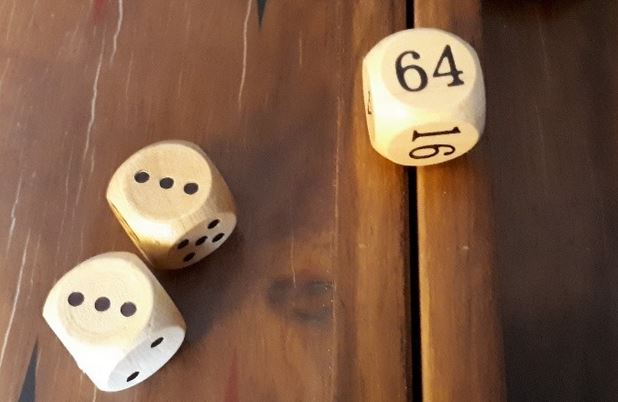Last updated on May 19, 2024
This Deluxe Backgammon post is another in our series for beginners and newcomers. Today we are going to take a look at how to score a backgammon match.
When backgammon tournaments are held to determine an overall winner, the usual style of competition is match play. Players are paired off, and each pair plays a series of games to decide who progresses to the next round of the tournament. This series of games is called a match. A single, standalone, game is known as a money game, regardless of whether or not money is being gambled. Matches are played to a specified number of points, for instance, 5 points. The first player to reach the target wins the match. Scoring matches is an essential skill when learning the basics of backgammon.
Points
In a match, you normally get 1 point for each game you win. So, for example, in a 5-point match, a player basically has to win five games to secure victory. However, because of certain elements in backgammon, a player can win a match without having to fight their way through all five games to win. This is because there are ways to raise the number of points at stake in each game played.
The first way you can raise the number of points you can win in a single game is through the use of the doubling cube. Most backgammon sets come with one doubling cube, which is a cubical block, typically larger than a regular die. It has the numbers 2, 4, 8, 16, 32, and 64 marked on its faces. It is used for keeping track of the increase in stakes of the game and the player who next has the right to double. The purpose of the doubling cube is to enable players to raise the stakes for a particular game. This allows you to raise the number of points you can win in a single game.
Stakes
Initially, the doubling cube will be placed in the centre of the backgammon board with the number 64 displayed. Despite, the number 64, it starts representing a value of 1. Once a player feels that they have the advantage in the game they can offer the doubling cube to their opponent and offer to raise the stakes of the game. If the opponent accepts this offer then the points for the game are doubled and the opponent keeps the cube on their side of the board, reserving the right to redouble. If the opponent rejects the offer to double, they immediately lose at the current game value. There is no limit to how many times the stakes can be doubled. If the value goes beyond 64, the players need to track the value.
Gammon and backgammon
Other than using the doubling cube there are other ways to increase the number of points a player can win for each game they play. If a player manages to bear off all of their checkers before their opponent bears off even a single checker then this is called a gammon. This is worth 2 points. The doubling cube is used, so the winner by a gammon receives 2 points multiplied by the final value of the cube.
In an instance where a player bears off all of their checkers and the opponent has not borne off any checkers and still has one or more checkers on the bar or in the winner’s home board. The win is known as a backgammon. Victory by a backgammon is worth 3 points. The doubling cube is used, so the winner by a gammon receives 3 points multiplied by the final value of the cube.
Summary
These are the basic rules on scoring you should know when learning backgammon basics. The doubling cube, gammons, and backgammons affect the points you score for each game played. The effects are cumulative. For example, a 5-point match doesn’t need five games to complete. It could be over in a single game with a victory by backgammon and a doubling cube value of 2. This would give the winner of the game 3 x 2, for a total of 6-points. Therefore, they would be the winner of both the game and the match.
Related content
Scoring a backgammon match from the USBGF.



I’ve only been playing backgammon for a few months. I have never seen a backgammon. Am I doing something wrong?
Hi Alice, a backgammon is fairly rare, perhaps only happening in 1% of backgammon games. A gammon is more frequent, occurring in perhaps 10% of backgammon games. These numbers are only estimates. Also, to lose by a backgammon generally requires your opponent to understand the correct bearing off strategies. It’s not just luck that triggers a backgammon loss but also a strong opponent that doesn’t leave blots when bearing off. Continue playing backgammon and I am sure you will come across a backgammon in the not too distant future. If you would like to improve your backgammon, take a look at our playing guides. Thanks for taking the time to comment, Jason